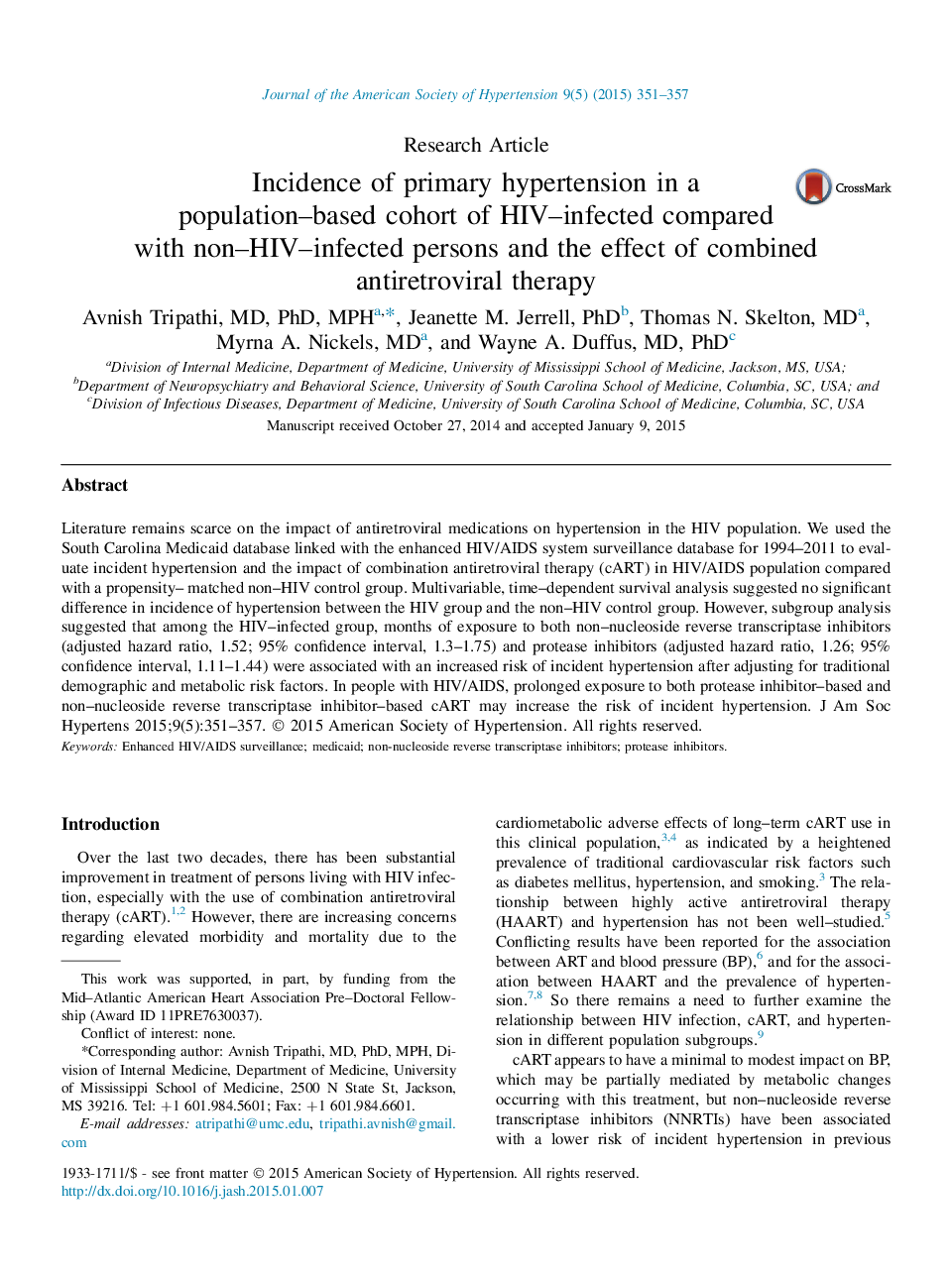| کد مقاله | کد نشریه | سال انتشار | مقاله انگلیسی | نسخه تمام متن |
|---|---|---|---|---|
| 5983627 | 1578038 | 2015 | 7 صفحه PDF | دانلود رایگان |

- No significant difference in incidence of hypertension in HIV and non-HIV group.
- Cumulative exposure to NNRTIs and PIs increased risk of hypertension in HIV group.
- Women and non-whites were at higher risk of incident hypertension.
- Co-morbid obesity, diabetes, and tobacco use increased risk of incident hypertension.
Literature remains scarce on the impact of antiretroviral medications on hypertension in the HIV population. We used the South Carolina Medicaid database linked with the enhanced HIV/AIDS system surveillance database for 1994-2011 to evaluate incident hypertension and the impact of combination antiretroviral therapy (cART) in HIV/AIDS population compared with a propensity- matched non-HIV control group. Multivariable, time-dependent survival analysis suggested no significant difference in incidence of hypertension between the HIV group and the non-HIV control group. However, subgroup analysis suggested that among the HIV-infected group, months of exposure to both non-nucleoside reverse transcriptase inhibitors (adjusted hazard ratio, 1.52; 95% confidence interval, 1.3-1.75) and protease inhibitors (adjusted hazard ratio, 1.26; 95% confidence interval, 1.11-1.44) were associated with an increased risk of incident hypertension after adjusting for traditional demographic and metabolic risk factors. In people with HIV/AIDS, prolonged exposure to both protease inhibitor-based and non-nucleoside reverse transcriptase inhibitor-based cART may increase the risk of incident hypertension.
Journal: Journal of the American Society of Hypertension - Volume 9, Issue 5, May 2015, Pages 351-357